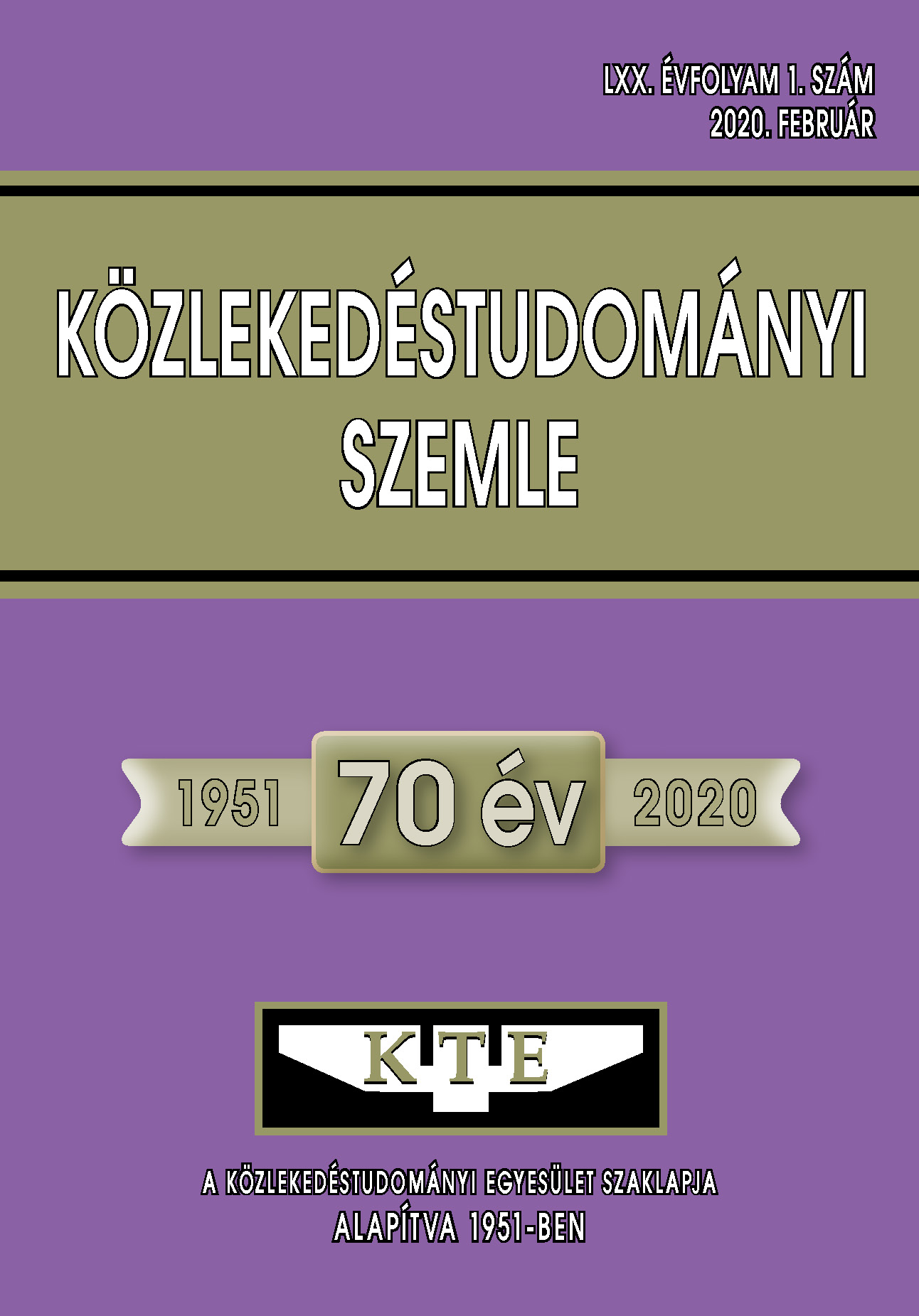The role and effects of machine learning in transport
Abstract
This article addresses the present and the predictable future role of artificial intelligence, and in particular machine learning, in transport. It briefly describes trends and changes in transport and vehicle development. It introduces the basics and types of machine learning, an important area of artificial intelligence. The article gives a brief overview of the impact of changes in the automotive industry in the area of the innovation sector, including higher education, and developments in Hungary such as the ZalaZone Automotive Test Track. It then summarizes the relevant legal and ethical issues, focusing on autonomous vehicles. A longer chapter discusses an ongoing domestic research which conducts experiments in the area of trajectory design using reinforcement learning methods. This gives insight into the details of the requirements and problems that arise, as well as a possible solution through machine learning. Finally, several results of the tests carried out at the ZalaZone test track are presented.
References
Robust Control Design for Active Driver Assistance Systems: A Linear-Parameter-Varying Approach, Springer International Publishing, 2017. DOI: http://doi.org/djzk
O. Sename, P. Gáspár és J. Bokor, Robust Control and Linear Parameter Varying Approaches, Berlin Heidelberg: Springer-Verlag, 2013. DOI: http://doi.org/djzm
Waymo, „Waymo Safety Report: On The Road to Fully Self-Driving,” 2017.. [Online]. Available: https://waymo.com/safetyreport/
Crash Research & Analysis, Inc., „Special crash investigations: On-site automated driver assistance system crash investigation of the 2015 Tesla model S 70D (Report No. DOT HS 812 481),” National Highway Traffic Safety Administration, Washington, DC, 2018.
S. Russel és P. Norvig, Mesterséges Intelligencia: Modern megközelítésben, Budapest: Panem kft., 2005.
T. Mitchell, Machine Learning, McGraw Hill, 1997.
F. Rosenblatt, „The Perceptron--a perceiving and recognizing automaton,” Report 85-460-1, Cornell Aeronautical Laboratory, 1957.
C. B. Csáji, Approximation with Artificial Neural Networks, Eindhoven, 2001.
F. Hegedűs, T. Bécsi, S. Aradi és P. Gáspár, „Model Based Trajectory Planning for Highly Automated Road Vehicles,” in IFAC World Congress: IFAC-PapersOnLine, Toulouse, Franciaország, 2017. DOI: http://doi.org/djzn
D. Silver, J. Schrittwieser, K. Simonyan, I. Antonoglou, A. Huang, A. Guez, T. Hubert, L. Baker, M. Lai, A. Bolton, Y. Chen, T. Lillicrap, F. Hui, L. Sifre, G. v. d. Driessche, T. Graepel és Demis, „Mastering the game of Go without human knowledge,” Nature, 1. kötet550, pp. 354-359, 2017. DOI: http://doi.org/gcsmk9
Z. Szalay, Z. Hamar és P. Simon, „A multilayer autonomous vehicle and simulation validation ecosystem axis: Zalazone,” Advances in Intelligent Systems and Computing, 1. kötet867, pp. 954-963, 2019. DOI: http://doi.org/djzp
Z. Szalay, T. Tettamanti, D. Esztergár-Kiss, I. Varga és C. Bartolini, „Development of a test track for driverless cars: Vehicle design, track configuration, and liability considerations,” Periodica Polytechnica Transportation Engineering, 1. kötet 46, pp. 29-35, 2018. DOI: http://doi.org/dktg
T. P. Lillicrap, J. J. Hunt, A. Pritzel, N. Heess, T. Erez, Y. Tassa, D. Silver és D. Wierstra, „Continuous control with deep reinforcement learning,” arXiv preprint arXiv:1509.02971, 2015.
F. Hegedűs, T. Bécsi, S. Aradi és P. Gáspár, „Model Based Trajectory Planning for Highly Automated Road Vehicles,” IFACPapersOnLine, 1. kötet50, 1. szám1, pp. 6958-6964, 2017. DOI: http://doi.org/djzn
H. B. Pacejka, Tire and Vehicle Dynamics (Third Edition), Oxford: Butterworth-Heinemann, 2012.
S. Thrun, M. Montemerlo, H. Dahlkamp, D. Stavens, A. Aron, J. Diebel, P. Fong, J. Gale, M. Halpenny, G. Hoffmann, K. Lau, C. a. P. M. Oakley és e. al., Stanley: The robot that won the DARPA Grand Challenge, Wiley, 2006. DOI: http://doi.org/c52vnf
T. Bécsi, S. Aradi, Z. Szalay és V. Tihanyi, „2D lidar-based localization for highly automated parking in previously mapped environment,” in 34th International Colloquium on Advanced Manufacturing and Repairing Technologies in Vehicle Industry, Budapest, 2017.
A. Gibson és J. Patterson, Deep Learning, O'Reilly Media, Inc., 2017.
R. S. Sutton és A. G. Barto, Reinforcement Leaning: An Intorduction, The MIT Press, 2017.
Articles published electronically are open access (OJS), freely available online and can be downloaded. Authors of articles are not charged any publication or publishing costs (APC). Users have the right to read, download, copy, print, and search the articles, or share the full text with a link.
Authors must declare that their submission has not been previously published in another journal, that financial support has been acknowledged, and that the list of references is complete and accurate, including specification of URLs and DOIs (if available). When submitting a draft article, each author approves the submitted version. Authors guarantee that the article is their original work. Authors are required to participate in the peer review process, follow the advice of reviewers, meet the prescribed deadlines, and, if any, withdraw the submission or correct errors.
All submitted articles are subject to peer review, where the editors request an independent evaluation from at least one expert, ensuring that the reviewer(s) have no conflicts of interest with the authors. The final decision is made by the Editor-in-Chief, who takes into account the evaluations and the suggestions of the editors. The editors and reviewers treat the submission confidentially.
The publisher and editors are committed to maintaining high ethical standards and to preventing publications that involve research misconduct. They follow the COPE guidelines on such ethical issues.
The authors retain copyright and grant the journal the right of first publication under the Creative Commons License (https://creativecommons.org/licenses/by-nc-nd/4.0), which allows others to share the work, while acknowledging the authorship of the work and the first publication in the journal.
The journal archives all published articles, and the journal's owner, the Hungarian Society of Transportation Sciences, will continue to operate the database even if the journal ceases to be published.















